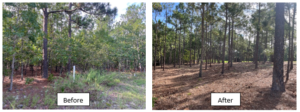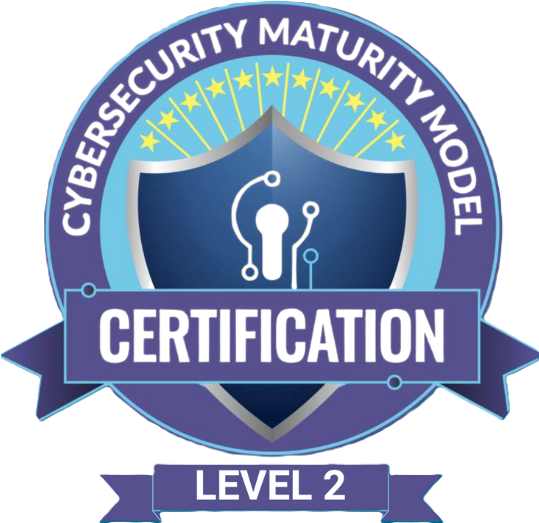For much of my career I’ve had to address Endangered Species Act (ESA) issues on federal land. Recently, I purchased a parcel of private land in an area with active nest sites for the red-cockaded woodpecker, a federally listed endangered species. The land had been neglected for decades. Fire, which naturally occurred every 1-5 years, had been suppressed for over 30 years. Turkey and blackjack oaks filled the underbrush and blocked sunlight from penetrating the midstory. A thick layer of deciduous leaves on the forest floor prevented longleaf and loblolly pines from germinating. Obviously, some type of intervention was needed to restore the habitat, but I was uncertain of my obligations and restrictions.
1. Incidental Take
About 80% of available habitat for at least 50% of listed species is on private land. Harassing, harming, pursuing, hunting, shooting, wounding, killing, trapping, capturing, or collecting or attempting to engage in any such conduct with a listed species is unlawful regardless of whether the action occurs on public or private land. Such actions are called “take,” and take is not allowed even when engaging in a lawful activity such as clearing brush or building a house. If I were dealing with federal land, I would prepare a biological assessment and consult with the US Fish and Wildlife Service (Service) to obtain a permit for incidental take. How does the process work for undertakings on private land?
2. Safe Harbor Agreements
In the early 1990s, the Service was tasked by the Secretary of the Interior to find a way to address take on private land without having to issue permits for every activity. In 1995, the Service unveiled Safe Harbor Agreements as a solution. Safe Harbor Agreements are non-federal partnerships that are critical to recovering listed species. Fortunately, our neighborhood Property Owners Association (POA) had entered into a Safe Harbor Agreement with the Service in 2018. The POA incorporated the terms of the Agreement into the Codes, Covenants, and Restrictions (CCRs) for the neighborhood.
3. Terms of the Agreement
The Agreement for our neighborhood specifies standards for managing resources in a manner that contributes to recovery of the red-cockaded woodpecker. The goal is to maintain an uneven age stand of longleaf pine that sustains a healthy population of the only woodpecker species in North America that excavates nest cavities in living trees. Trees older than 80 years are needed for nesting and younger trees are needed for foraging. An open midstory is needed to allow sufficient light for growth of forbs and wiregrass and germination of longleaf pine on the forest floor. The agreement with the Service prescribes management procedures including removal of hardwoods, protection of cavity trees, and restrictions on construction activities during the active nesting season.
I surveyed my property and found an abundance of turkey oaks interspersed with longleaf pine and loblolly pine. I also discovered several persimmon and sassafras with an occasional American holly and cherry. A single flowering dogwood was hidden beneath the thick underbrush. Over five hundred trees were crowded into two-thirds of an acre. Most were less than 15 feet tall and had a trunk diameter of less than 3 inches. The largest turkey oak and longleaf pine were 16.5 and 15.5 inches in diameter, respectively. Fire was not an option for clearing the undergrowth because of proximity to residences.
Under the terms of the Agreement, I was allowed to manually remove all hardwoods regardless of size and any pine trees with a diameter of less than four inches. Over a 10-month period, I removed at least 400 trees. I left the largest turkey oak, American holly and cherry trees and the only dogwood I found. The oaks, persimmon, and sassafras quickly germinated from the residual roots and stumps. I walked the site twice a week to remove any hardwood sprouts and will continue to do so until the deciduous leaf litter has decomposed and forbs and wiregrass return. Use of herbicide is also not allowed without a specific permit. A site visit and approval by the Service would be needed if I planned to construct a residence or deviate from the management procedures stated in the Agreement.
4. Benefits and Enforcement
Property owners benefit by not having to obtain a permit each time they undertake an action on their property if they follow the standards specified in the Agreement and the CCRs, which I did. Property owners must submit building plans to the POA for approval, a tree survey is required as part of the approval process, and the Service has open access to all parcels to monitor the woodpecker population and inspect proposed construction sites. Both the POA and the Service play a role in enforcement. Most importantly, in exchange for actions that contribute to the recovery of listed species on nonfederal lands, participating property owners receive formal assurances from the Service that if they fulfill the conditions of the Safe Harbor Agreement, the Service will not require any additional or different management activities by the participants without their consent.
5. Bottom Line
ESA compliance is not limited to federal land or federal projects. Every citizen has a responsibility and mechanisms such as Safe Harbor Agreements exist for protecting species on private land. At Scout, we can assist in addressing your needs for compliance with ESA and many other environmental statutes. Please reach out to us at hello@scoutenv.com for your ESA compliance needs.















